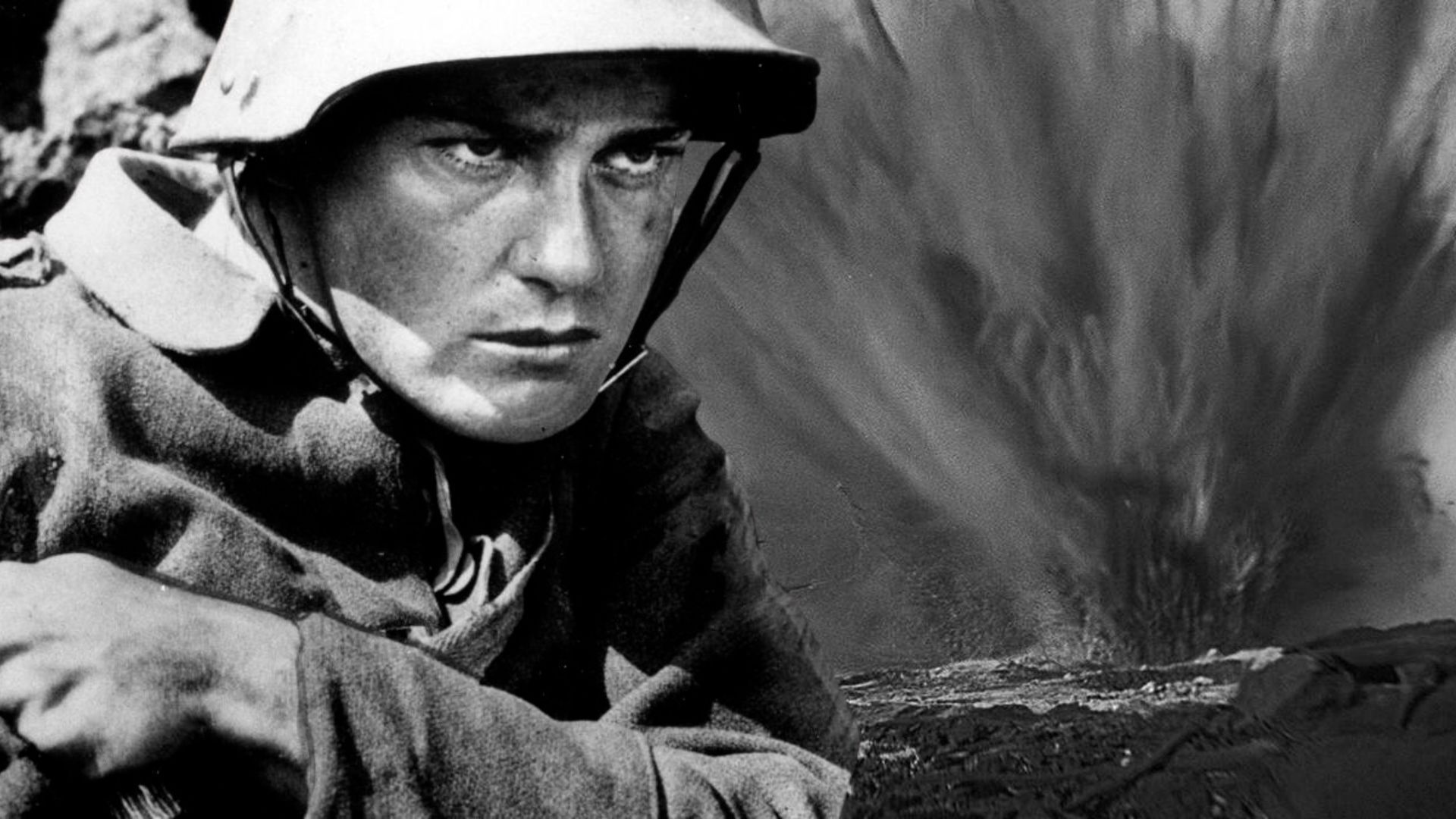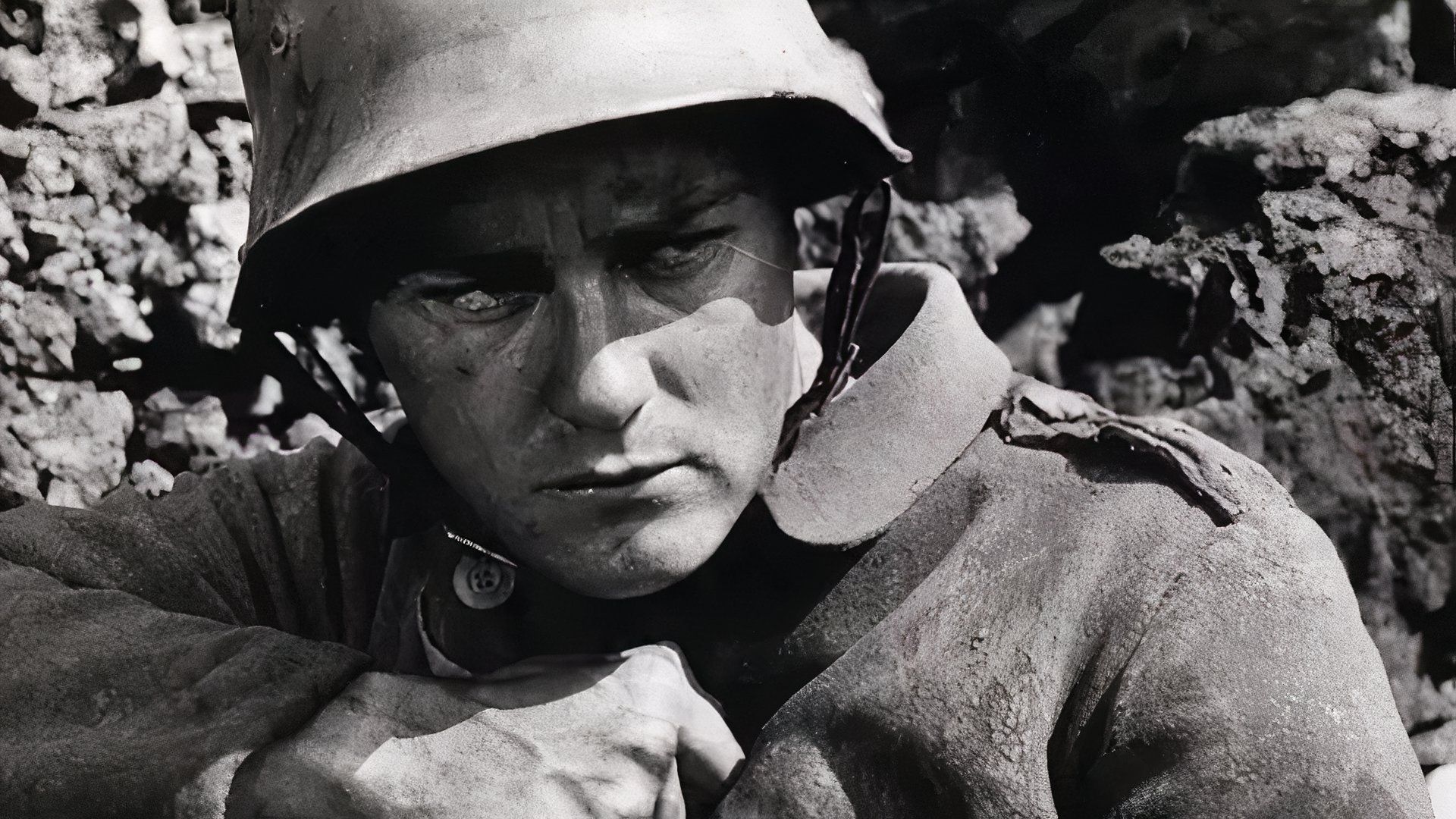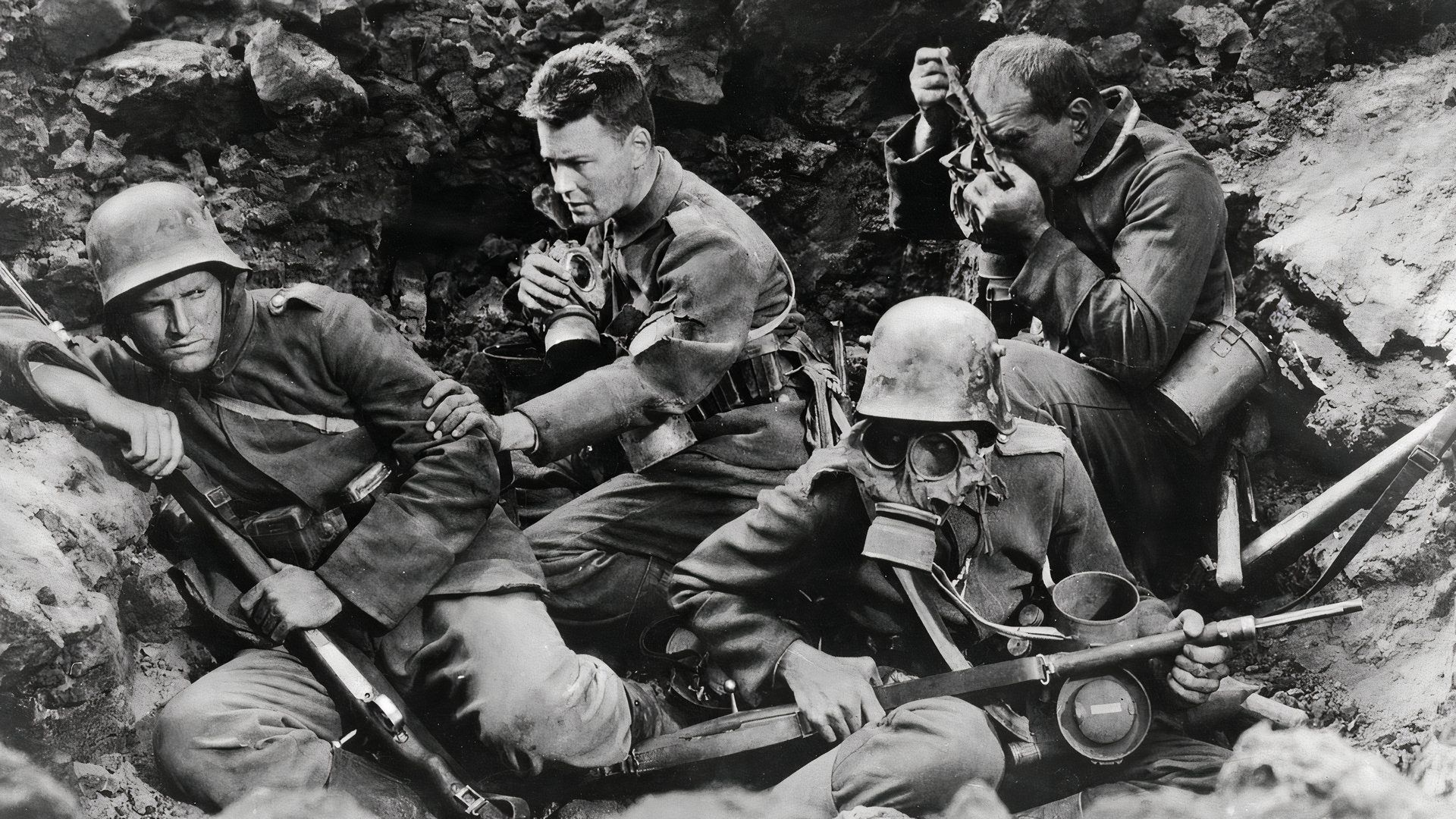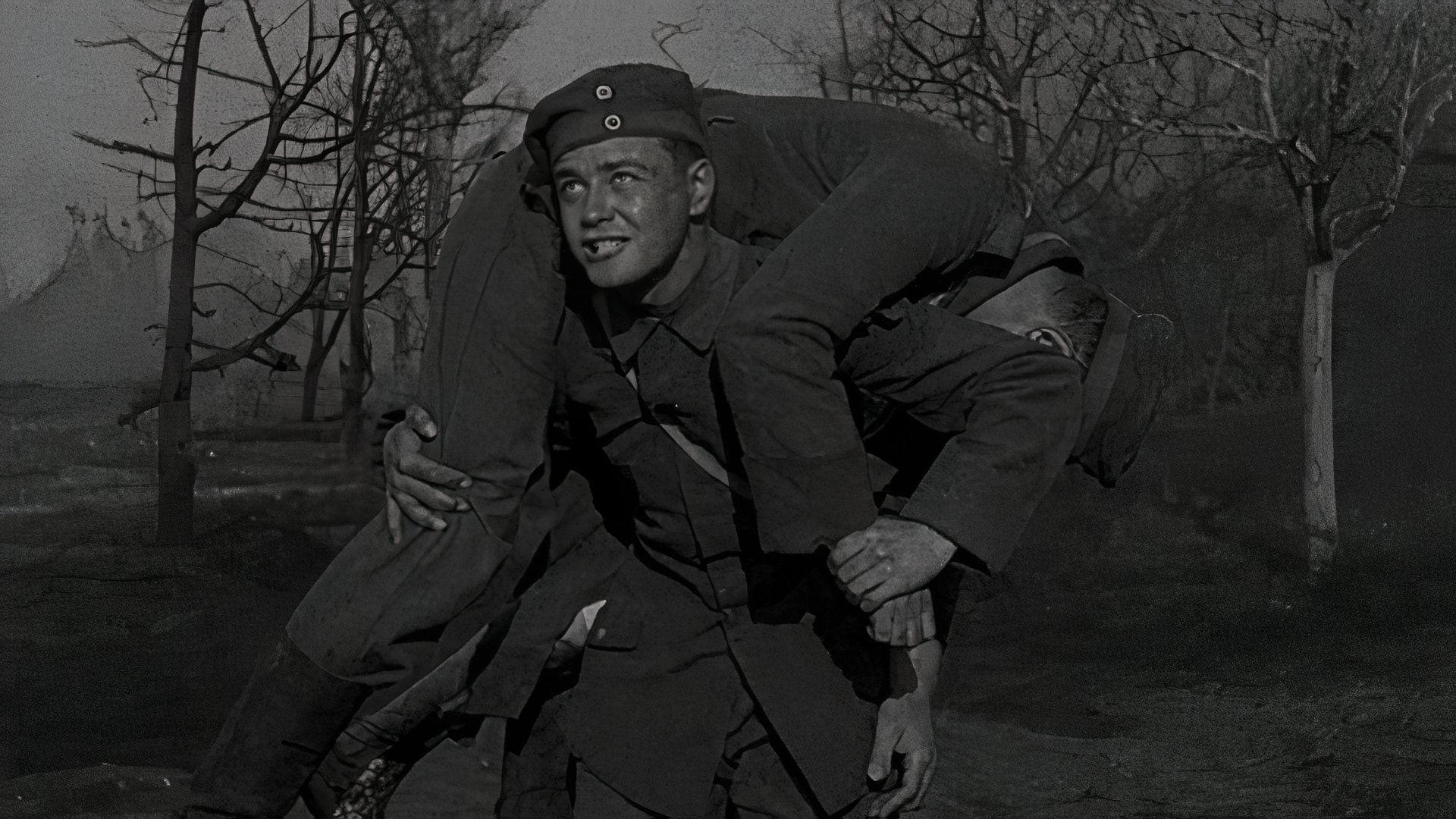
When you inquire about the qualities that define an outstanding war film from a filmmaker or critic’s perspective, they may highlight several elements. These could include portraying soldiers as real people, showing the brutal and harrowing aspects of war that are often overlooked, and questioning the motivations behind conflicts led by governments and individuals. In fact, numerous highly-regarded war films, such as “Paths of Glory” (1957), “Platoon” (1986), “Saving Private Ryan” (1998), and “Come and See” (1985), among others, embody some or all of these features.
Despite being produced by different filmmakers in various timeframes, depicting diverse wars, these films share a common influence: the 1930 adaptation of “All Quiet on the Western Front.” This classic film, directed by Lewis Milestone, set many standards for future war movies and remarkably resonated with its predominantly American audience, who found themselves empathizing with a nation that was once their adversary (and would be again a decade later).
World War I From the German Perspective
The film “All Quiet on the Western Front” is based on Erich Maria Remarque’s semi-autobiographical novel of the same title, which was published only a year before the movie came out. This novel has been adapted for the big screen on two other occasions, in 1979 and 2022. The story follows a group of German schoolboys who willingly join the German army during World War I under the influence of their patriotic teacher (Arnold Lucy). The narrative primarily revolves around one young man named Paul Bäumer (Lew Ayres), tracing his experiences throughout the war.
In my personal take on this film, I must confess that the idyllic, heroic portrayal of war presented by our teacher was swiftly debunked as the boys were thrust headlong into the harrowing reality of combat. The relentless march of warfare transformed each young man into a haunted soul, with many losing their lives or succumbing to the crushing weight of mental and physical anguish. As the war dragged on, our faith in its purpose crumbled like sandcastles under a stormy tide.
As a devoted admirer, I can’t help but share my awe for this remarkable cinematic masterpiece. It was not just a critical triumph, but it also clinched the prestigious Academy Award for Outstanding Production, later rechristened as Best Picture – making it one of only three films to do so. In 1998, the American Film Institute even ranked it among the top 100 films ever made. However, this film, along with its source novel, stirred up a storm of controversy in various parts of the world. The most significant controversy was sparked by its anti-war stance and its unflattering portrayal of Germany, which caught the attention of the rising Nazi Party. Their chief propagandist, Joseph Goebbels, spearheaded violent and antisemitic protests against screenings of the film in Germany, eventually leading to a complete ban on it.
Humanizing the Enemy



Although created by filmmakers from America primarily for American viewers, this movie does not vilify or criticize the German soldiers. Instead, it critiques the corrupt institutions and influential figures who exploit war to their advantage, while compelling common young men to wage the conflict on their behalf. This idea is most clearly conveyed in an initial scene where these men express their bewilderment and discontent towards the nationalism and colonialism (including that of Kaiser Wilhelm II) which played a significant role in sparking World War I. This method of portraying war from the opposing side’s viewpoint was later used in films such as Das Boot (1981) and Letters from Iwo Jima (2006).
Despite its age, over a century old, the battle scenes in ‘All Quiet’ remain as hauntingly intense as those in contemporary World War I films such as ‘1917’ (2019) and its own 2022 remake. The realistic special effects and sound design for the artillery and gunfire create a palpable, gut-wrenching sensation. Furthermore, the set design and cinematography brilliantly portray the grime and claustrophobia of trench life, an experience common to both German and Allied soldiers.
In one particular scene, the movie underscores the camaraderie shared by Allied and German soldiers, as a remorseful character named Paul pleads for pardon from a French soldier he has wounded, expressing regret that they could have been kin had it not been for their distinct uniforms.
Veterans’ Issues
A frequent topic in war films is the devastating impact of wars on the soldiers who participate, manifesting as mental, emotional, and physical harm. Interestingly, “All Quiet” was produced half a century before PTSD was recognized in psychiatry, yet one of its characters, Franz, portrays symptoms such as recurring nightmares and a breakdown due to witnessing a fellow soldier’s gruesome death on the battlefield – symptoms that are now synonymous with PTSD. Since then, PTSD has emerged as a prevalent theme in war movies, with films like “The Deer Hunter” (1978), “Brothers” (2009), and “Thank You For Your Service” (2017) all delving deeply into this condition.
However, the film’s most poignant critique on the challenges veterans face is evident when the character Paul takes a temporary leave (furlough) and goes back to his hometown to see his family. Despite this, he encounters dismay upon hearing his teacher, father, and other townspeople who are overly patriotic trivialize the hardships of soldiers like him. They even try to convince him that the war is still viable, which only enrages Paul. In a moment of frustration, he expresses his negative views about the war to a class full of students, standing right next to his teacher. Unfortunately, these students label him as “cowardly” and “traitorous.” The disregard at home ultimately forces Paul to make the painful choice to end his furlough early and go back to the battlefield — with devastating consequences.
A frequent theme in war films is the sense of estrangement that veterans often feel upon their return home. For instance, the character Paul in these movies shares a similar disenchantment with and resistance to the war, much like Ron Kovic – a Vietnam War veteran who became an anti-war activist in real life. His story was portrayed in Oliver Stone’s film “Born on the Fourth of July” (1989).
Is the Film Anti-War?
Remarkably, even after 95 years, this film continues to resonate deeply and significantly. Despite French director François Truffaut’s assertion during a 1973 interview with Gene Siskel that every war film somehow glorifies conflict, the powerful impact of All Quiet on the Western Front makes it challenging to view war as anything but tragic. The film’s harrowingly authentic battle sequences, unflinching portrayal of physical and emotional turmoil, compassion for soldiers from both sides, and outright contempt for the avarice and self-importance that fuel war collectively denounce war as brutal and inhumane. If this isn’t enough to highlight the film’s anti-war stance, perhaps the fact that the Nazis – the perpetrators of the deadliest war in human history – saw it as an anti-war statement will convince people.
All Quiet on the Western Front can be streamed for free on Tubi.
Read More
- Clash Royale Best Boss Bandit Champion decks
- PUBG Mobile or BGMI A16 Royale Pass Leaks: Upcoming skins and rewards
- Mobile Legends November 2025 Leaks: Upcoming new heroes, skins, events and more
- Clash Royale Season 77 “When Hogs Fly” November 2025 Update and Balance Changes
- Zack Snyder’s ‘Sucker Punch’ Finds a New Streaming Home
- The John Wick spinoff ‘Ballerina’ slays with style, but its dialogue has two left feet
- Kingdom Rush Battles Tower Tier List
- Deneme Bonusu Veren Siteler – En Gvenilir Bahis Siteleri 2025.4338
- Tom Cruise’s Emotional Victory Lap in Mission: Impossible – The Final Reckoning
- Delta Force Best Settings and Sensitivity Guide
2025-04-20 17:35